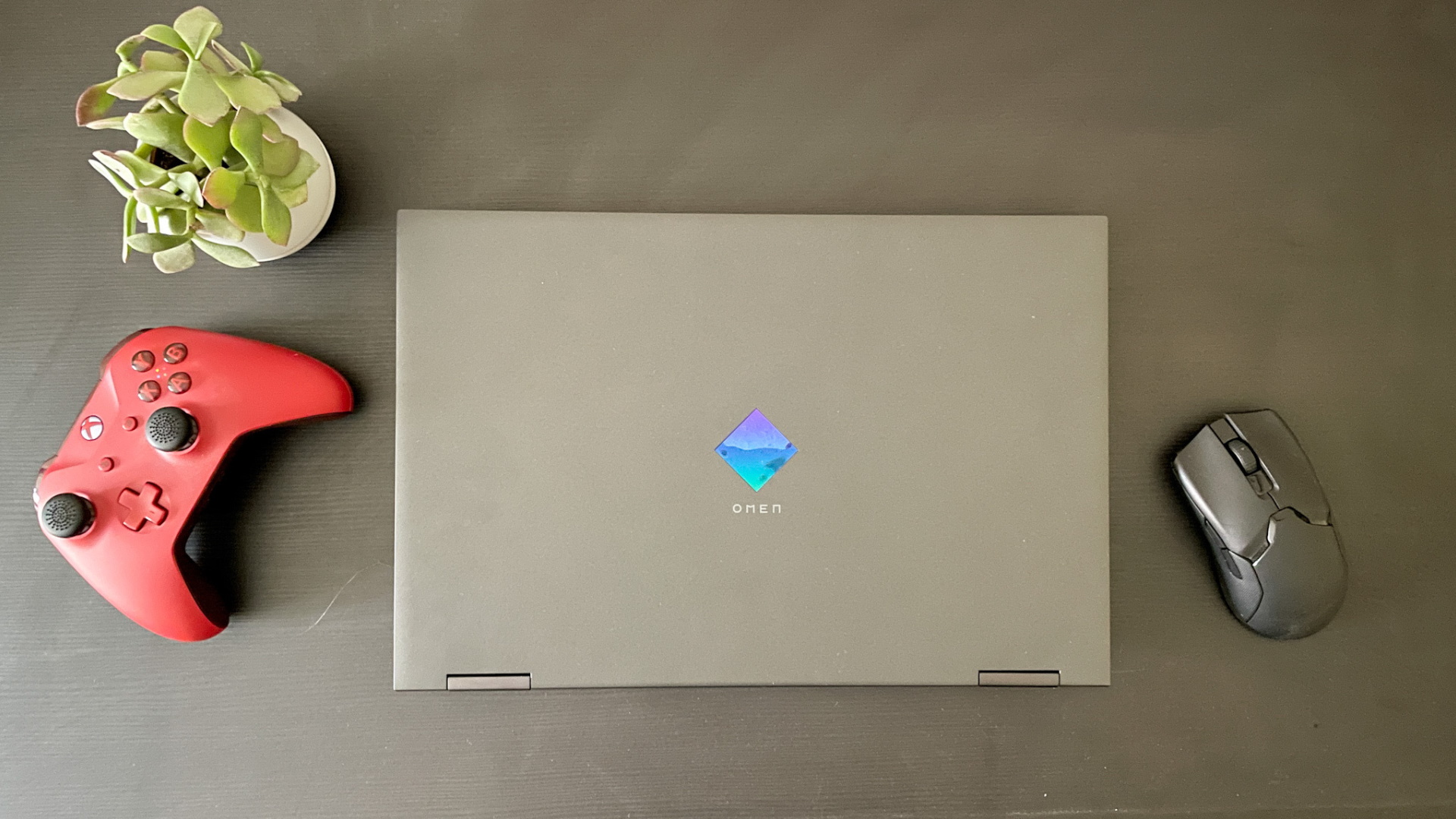GamesRadar+ Verdict
The HP Omen 15 is a laptop that could make waves in the gaming laptop market. Combining a powerful display with a solid set of specs under the hood, this machine allows the Ryzen processor to sing, even if the RTX 3060 model will require a few sacrifices on fancier graphical features.
Pros
- +
Excellent CPU performance
- +
Fantastic color and motion handling
- +
Fairly low price tag
Cons
- -
Build feels a little flimsy in the display
- -
Some sacrifices on an RTX 3060 model
Why you can trust GamesRadar+
While HP's gaming laptops haven't always hit the mark, the HP Omen 15 (1007na) is a solid entry into the current slimline trend. While still packing a few pounds, this machine is a much more streamlined build than previous iterations, and while some smaller niggling design choices are frustrating on the periphery, there's plenty to celebrate in the overall experience here.
I spent a few weeks with the HP Omen 15, and dug out my rusty old 2018 Omen to compare some changes, putting it through its paces with the latest games and some daily work. Back when I first got my hands on an HP Omen, these machines weren't great. From so-so performance to a huge blocky design that takes up half a desk by itself, this line hasn't exactly had an easy time of it.
However, after spending some time with the new iteration, it's easy to see that the tides have turned, with a smaller form factor and excellent CPU handling bringing it far close to the best gaming laptops on the market right now.
Design
The HP Omen 15 is very much following the trend of slimline gaming laptops that eschews the angular designs and bulk of previous iterations for a far more subtle aesthetic. With a compact lower half comprising a simple keyboard (there's no numpad) and large touchpad and a simple diamond Omen logo on the back of the matte black exterior, this is a toned-down machine that would fit in at an office just as well as it would in an RGB-clad setup.
That chassis offers up a sturdy frame with no bounce or bend in the keyboard plate or on either side of the touchpad. However, there is considerable flex to the screen which wobbles on the hinge quite easily. That's not a major concern - this machine comes in under $1300 / £1300 with some impressive components under the hood - but does show how the materials used to make this machine so slim aren't the most solid in the business.
Still, there's a solid hinge between the two halves that holds the weight of the main board when opening well.
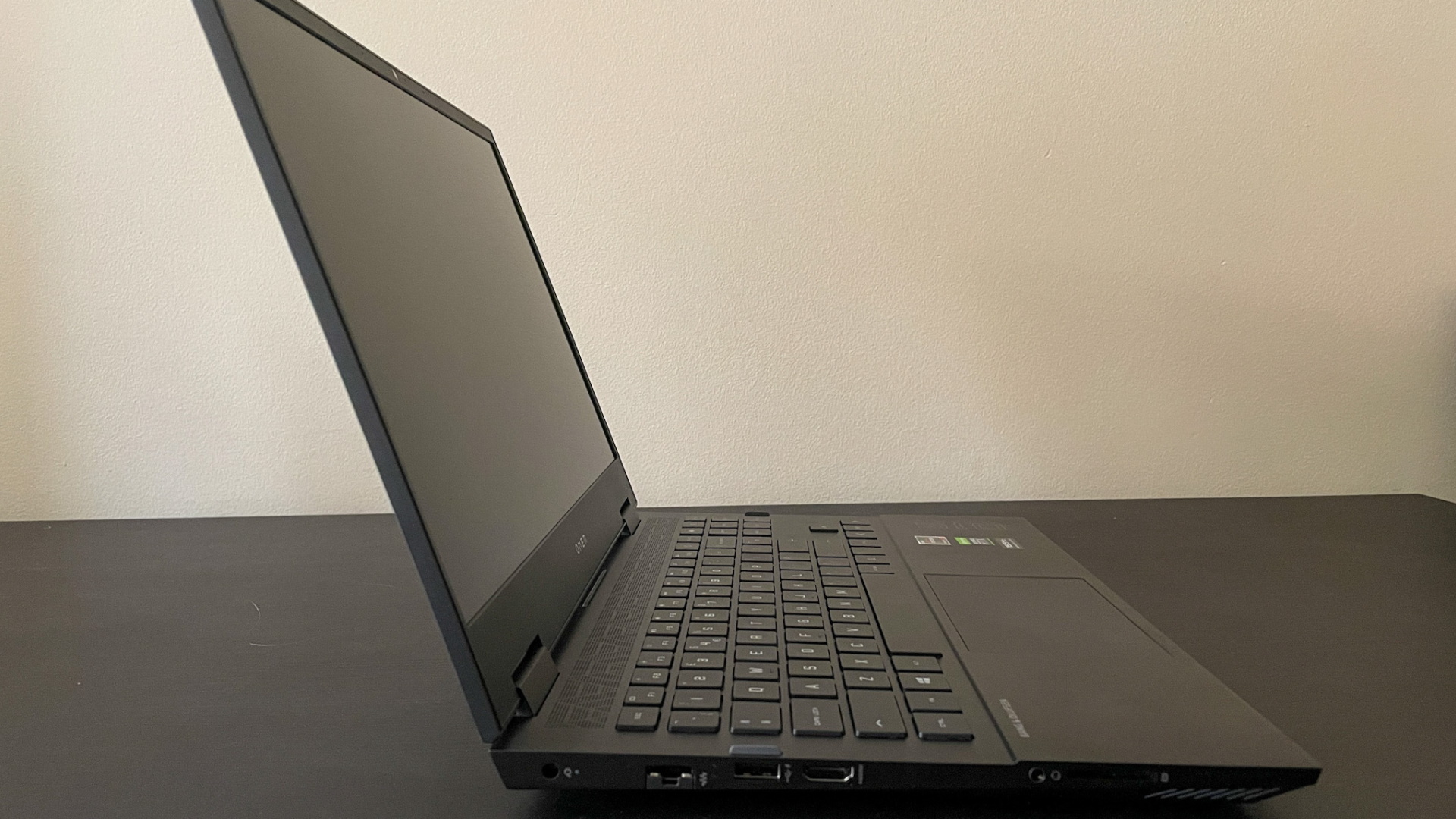
Strangely, HP has placed the power button along the top row of the keyboard, perilously close to the delete key. While I never had any issues with accidental presses putting the machine to sleep it did take some getting used to and made me miss the simpler dedicated space on previous models.
Power up the HP Omen 15, though, and you'll immediately spot four-zone RGB across the main keyboard. These LEDs aren't quite as bold as RGB lighting on other devices, and offer up more of a pastel tone, especially in sunlight (though they do still hold up well in brighter conditions).
It's worth noting that the Omen weighs in at 2.46 kg, so while slimline there's still some considerable heft to this device. For reference, the MSI Stealth 15M weighs in at just 1.67kg with a similar form factor.
Features
Processor: AMD Ryzen 7 5800H
Graphics: RTX 3060
Memory: 16GB
Display: 15.6-inch IPS at 165Hz
Resolution: 2560 x 1440
Storage: 512GB
Ports: 1x SuperSpeed USB Type-C / Display Port; 3x SuperSpeed USB Type-A, 1x Mini Display Port, 1x HDMI 2.1, 1x RJ-45, 1x AC smart pin, 1x 3.5mm headphone jack
Connectivity: Intel WiFi 6 AX200 and Bluetooth 5
OS: Windows
Weight: 2.46kg
One of the most notable features of the HP Omen 15 is its gorgeous 1440p 165Hz display. It's capable of producing a particularly crisp picture, with the quality even noticeable on home screens and desktop icon text. With deep, rich blacks and fantastic color handling, there's plenty to marvel at here and motion is particularly smooth at 165Hz as well.
That display is still a little glossy, so there was a bit of shine in brighter lighting conditions. However, it's one of the best-looking laptops I've seen in a while once the lights were a little dimmer.
The keyboard is snappy and responsive, feeling great in the hand though noticeably less clicky than my older model. Still, there was a super-fast return rate here and a satisfying bite with a short travel time that made gliding across the board feel all the more natural.
I averaged a WPM of 87 on the HP Omen, with a 98.6% accuracy. That's pretty impressive considering my average on the super-fast HyperX Alloy Origins 60 is 91.3 WPM with 96.3% accuracy, and that model nudges the best gaming keyboards in performance, not to mention it's my daily driver with plenty of muscle memory baked in. The wide touchpad features a silky soft finish and feels great to use, with a responsive tap and just the right level of resistance beneath the main clicks as well. Of course, you'll likely be using one of the best gaming mouse options during gaming, so this is left for work use.
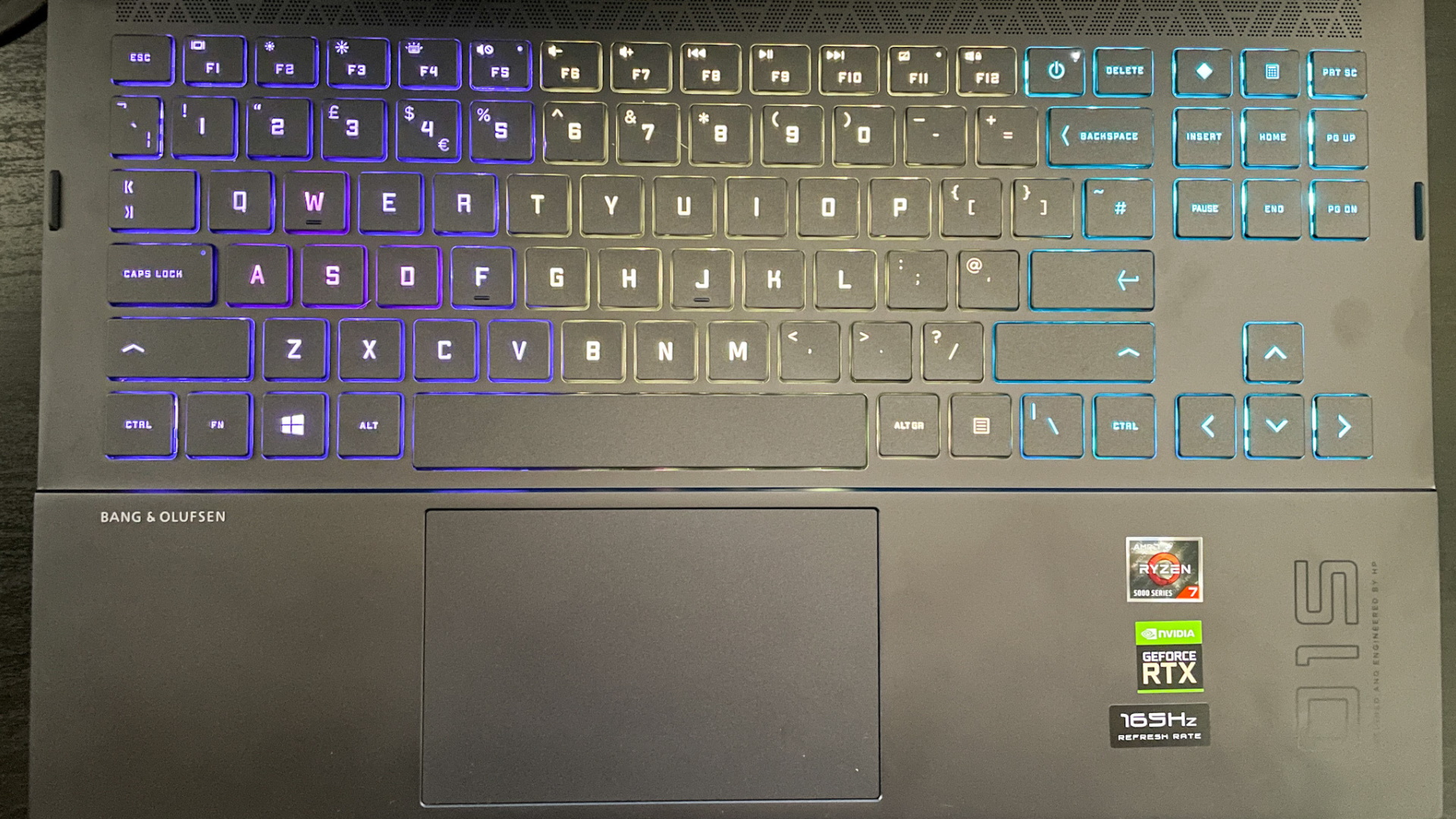
Omen Gaming Studio is baked right in still and offers a super clean terminal for all your presets, keyboard lighting, and installed games. Revitalized from the Omen Command Centre of previous iterations, this is a particularly easy-to-use piece of software. I love that HP has done away with the 'spy' aesthetic that so many machines paint over the top of their built-in software, instead offering a range of simple menus.
Those running mobile devices with Android Marshmallow and iOS 13 can also make use of the Remote Play feature, a program that casts your gameplay to a secondary device. While a little laggy, it functioned well in my testing, but I don't really see a particular use case considering you'll need to be on the same WiFi connection to get a chance of playing. This is a feature definitely best placed on HP's gaming PCs.
Performance
We put the HP Omen 15 to the test on some well-known benchmarking exercises (all at 1080p), here's how it matched up:
Firestrike: 7254
TimeSpy: 7753
PC Mark 10: 6057
Cinebench CPU: Multi-core: 9,873; Single-core: 1,320
Tom Clancy's The Division 2: Ultra: 55 fps; High: 61 fps
Metro Exodus: Ultra (RTX): 53 fps; High: 59 fps
Shadow of the Tomb Raider: Highest: 58 fps; High: 65 fps
Total War: Three Kingdoms: Ultra: 53 fps; High: 59 fps
Red Dead Redemption 2: Ultra: 48 fps; High: 54 fps
The HP Omen was remarkably quiet during day-to-day tasks and even lighter gaming. Those fans did kick into gear during the most demanding moments, but the whirring never outstayed its welcome, and I didn't notice any particularly concerning temperature climbs. If you're concerned, though, the best gaming headsets can easily block that extra noise out. That was a little surprising considering these cheaper slimline laptops often lack the internal cooling structures to keep their compact insides at an acceptable temperature. The CPU is incredibly efficient here, though, running super fast during everyday work and play.
The autumnal tones of Life Is Strange: True Colors looked gorgeous on the QHD screen, with colors popping across the town and smooth background movements, shadows, and detailing throughout my travels. The display panel made every game feel a little more vibrant, offering up a super bright picture but sometimes sacrificing clarity for contrast in more cluttered scenes.
I often push my old 2018 Omen too far when loading up larger Planet Coaster projects, but this model handles even the most densely packed areas with aplomb, only really starting to feel the throttle when the park is absolutely full of moving guests. The detailing and lighting were particularly impressive here, though.
When it came to faster action sequences, things kicked up a notch. Games like Doom Eternal and Apex Legends gave the fans something to contend with, and sometimes dropped a considerable number of frames when the system wasn't set to prioritize performance over all else. I experimented with running these titles on battery power and it's obvious that this was not the intended use case. While playable, it's very much recommended to keep an outlet nearby.
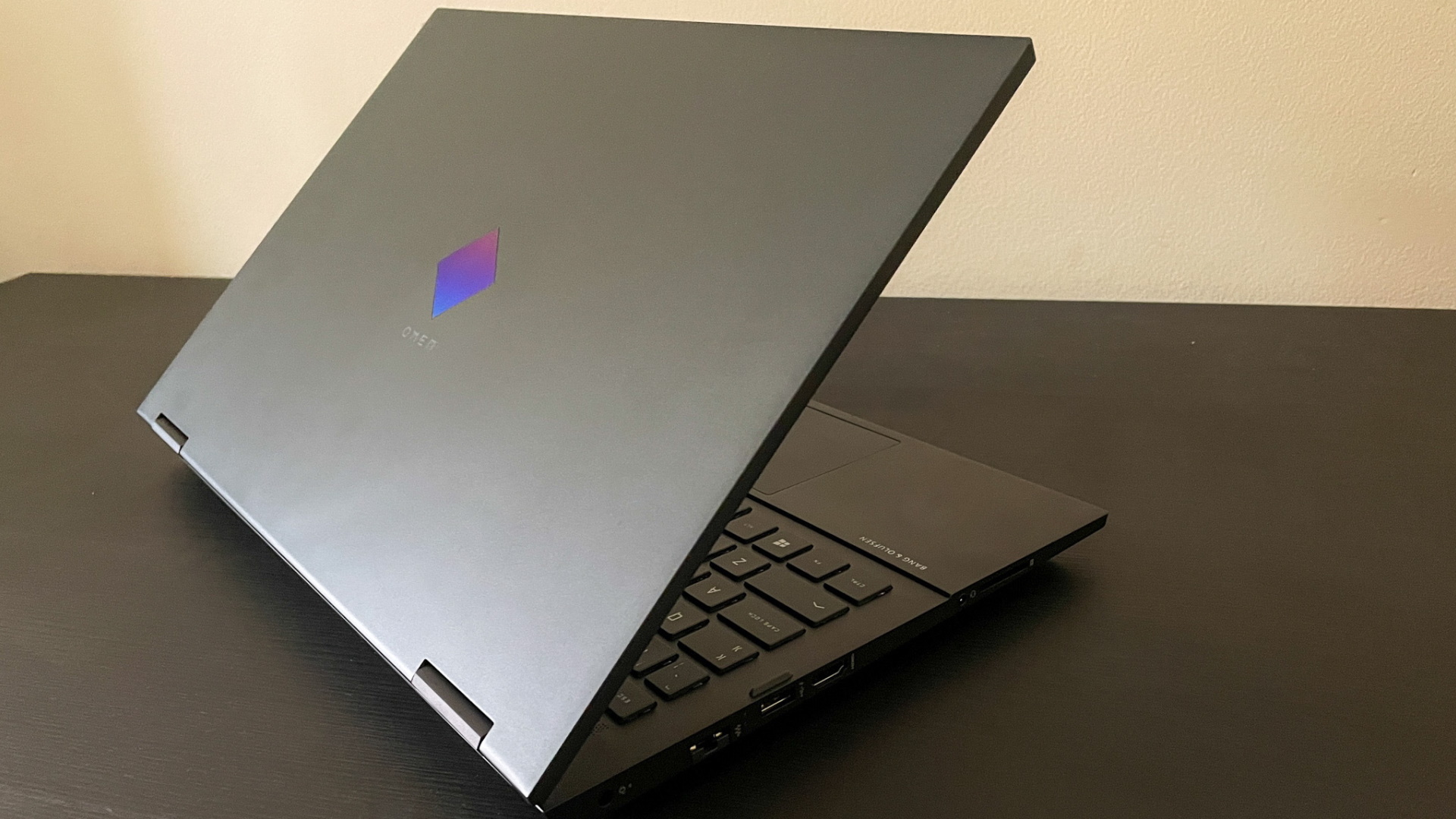
The frame rates coming out of this machine won't rival some of the more premium options, but still hit 60fps when I paid more attention to graphical aspects that weren't as necessary as a smooth picture. This is a cheaper RTX 3060 laptop, but there's still a Ryzen 7 5800H processor inside and a good amount of RAM as well. It was a little disappointing to have to make sacrifices to reach 60fps on games like Red Dead Redemption 2 and Metro Exodus, but these are more demanding titles and the RTX 3060 is still at the 'lower' end of the 30-series spectrum. Shadow of the Tomb Raider and The Division 2 ran much better (though some particle effects were sacrificed in the latter).
It's also worth mentioning that, while you're getting a 1440p display here, more intense titles run much better at 1080p, so save your super-resolution for specific games, work, and binge-watching.
Should you buy the HP Omen 15?
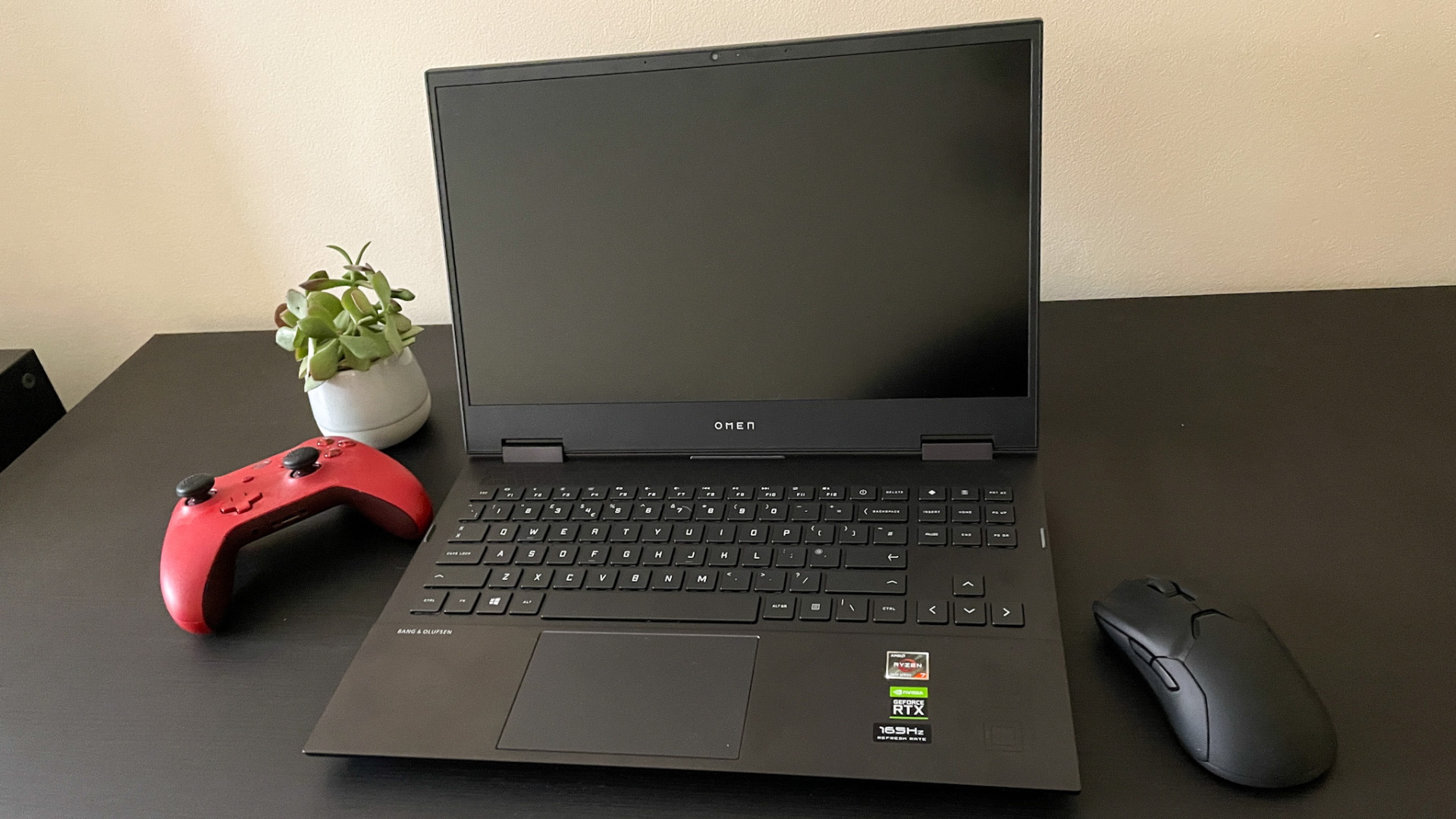
The latest HP Omen 15 redesign certainly brings the line into the aesthetic of today's most popular machines. While you're not getting the outright performance of some of the best Alienware gaming laptops like the Alienware M15 R6, you're not paying for it. Instead, you're getting a slimline machine with a gorgeous screen that feels tailor-made for 1080p-1440p gaming. That $1,350 MSRP feels a little high considering the Asus TUF Dash F15 often packs an RTX 3070 card into that price tag. However, the screen technology on here may save the day if you play slower, more strategic titles.
If you're looking to get access to those Ultra settings with a reliable result, though, we'd recommend picking out an RTX 3070 laptop (these configurations are generally $150 more). Of course, you'll be spending a lot more, but the best performance will be found in premium RTX 3080 laptops.
We're also rounding up all the best Razer gaming laptops on the market right now if you're looking for more slimline designs. Or, take a look at the best gaming PCs if you're after a desktop experience. If so, we'd also recommend checking out the best gaming desks and the best gaming chairs for a full setup.

Managing Editor of Hardware at GamesRadar+, I originally landed in hardware at our sister site TechRadar before moving over to GamesRadar. In between, I've written for Tom’s Guide, Wireframe, The Indie Game Website and That Video Game Blog, covering everything from the PS5 launch to the Apple Pencil. Now, i'm focused on Nintendo Switch, gaming laptops (and the keyboards, headsets and mice that come with them), PS5, and trying to find the perfect projector.
